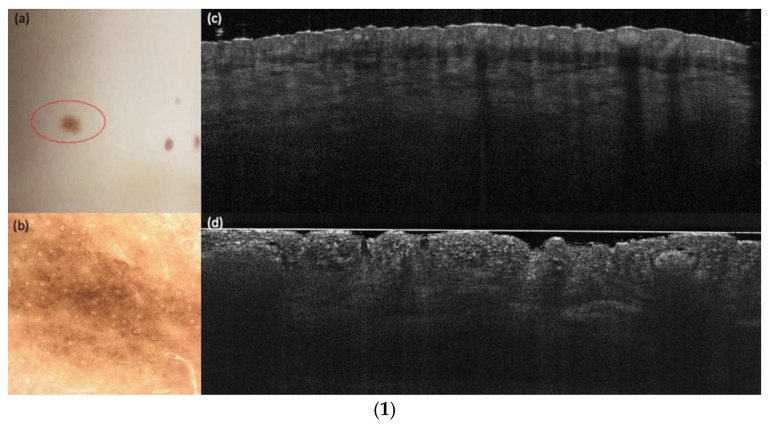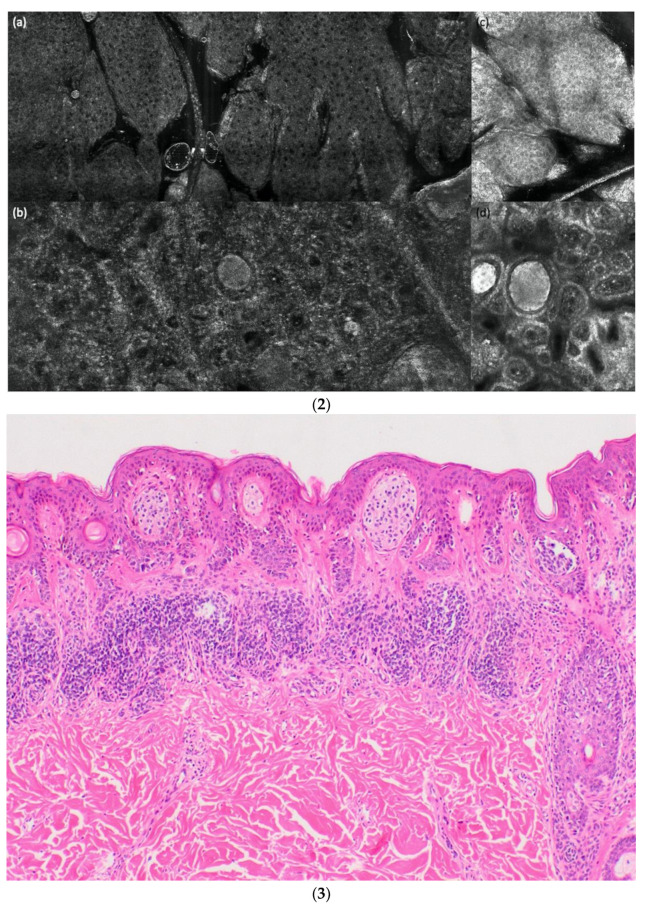Figure 2.
(1) A compound nevus in comparison with vertical LC-OCT and OCT. A compound nevus on the left lumbal trunk. (a) Clinical, (b) dermoscopical, and (c) optical coherence tomography (OCT; 6 mm × 2 mm) images of a representative nevus of the study. (d) In vertical line-field optical coherence tomography (LC-OCT; 1.2 mm × 0.5 mm) images junctional and dermal nests, a well-defined dermo-epidermal junction (DEJ), and a papillomatous surface can be seen. (2). A compound nevus in comparison with horizontal LC-OCT and RCM. The same compound nevus is depicted in horizontal LC-OCT (1.2 mm × 0.5 mm) with a regular honeycomb pattern (a), with nests in the upper dermis and regular papillae (b). Reflectance confocal microscopy (RCM; 500 µm × 500 µm) shows the same features. A regular honeycomb pattern (c) and junctional nests, as well as regular papillae, but just a little bit brighter (d). (3). A compound nevus in histology. The histology shows the same compound nevus as in (1) and (2) with 4× magnification.


